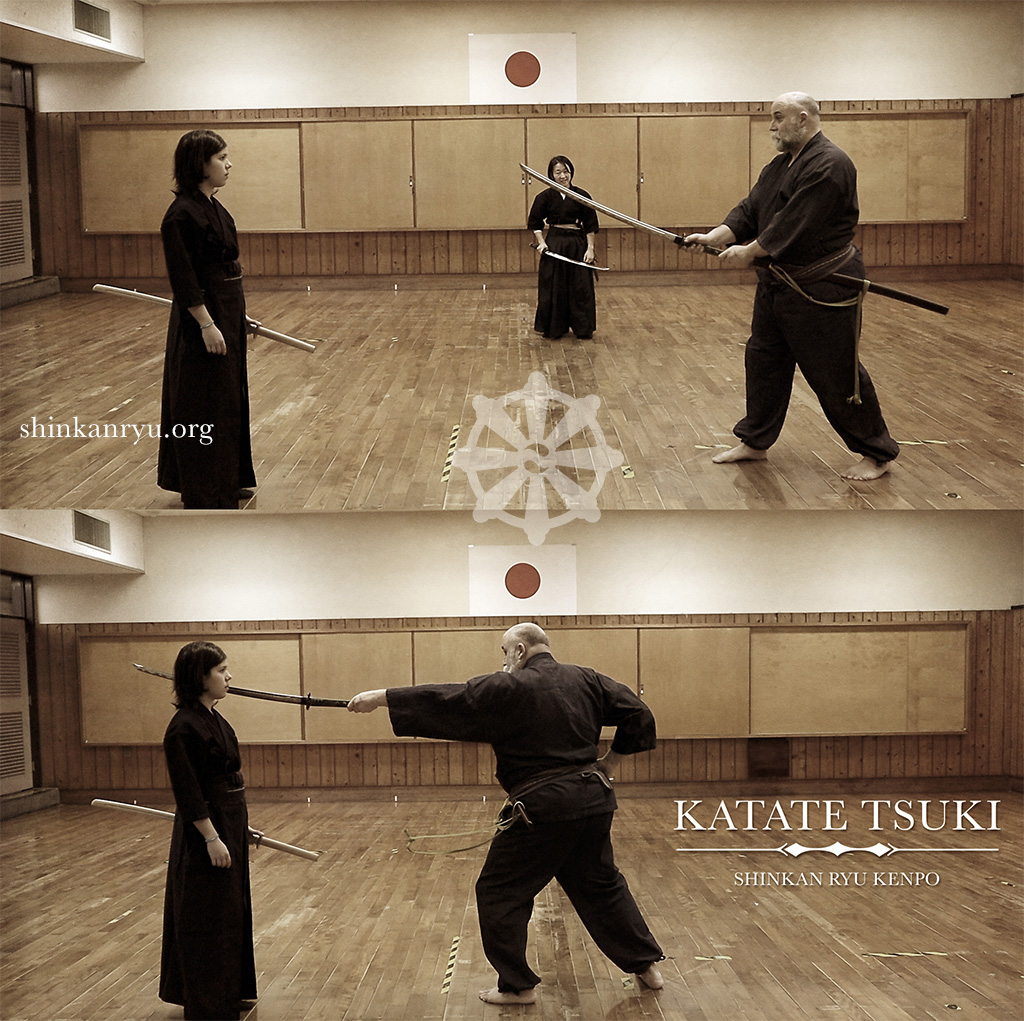Thrusts (突 tsuki) are extremely effective with the katana. Classical Japanese martial arts are replete with thrusts. In the above photo, moving from point A to point B requires just one step. This thrust covers a lot of ground between combatants. Shinkan-ryū features various thrusting methods in its kenjutsu and iaijutsu curriculum.
Historically, thrusting in sword fighting (kenjutsu and iaijutsu) causes extremely hard to treat wounds. The internal damage done from even a slender knife or dagger is fatal in the correct area.
Tsuki is also one of the more aggressive actions still kept in modern Kendo. Anyone practicing kendo that has been on the receiving end of such a thrust to their neck or chest can tell you how powerful it is. The 1:40 mark in the video below demonstrates it well.
People tend to focus on ferocious cuts and swings of the sword. The tsuki, however, is just as deadly and can be launched even quicker than a swing of the sword. Stabbing and thrusting is also important in armored fighting (鎧組 yoroigumi), where weak points are more easily exploitable by various weapons. It is something to pay attention to and understand.
It is important to note that even swords without a cutting edge still retain a very deadly tip (kissaki) so it is important to be safe even using an iaitō 居合刀 (blunt sword for training). There was a death in Tokyo in 2016 of a man who apparently fell on his blunt sword during iaido practice. Sadly, he did not survive his injury.


